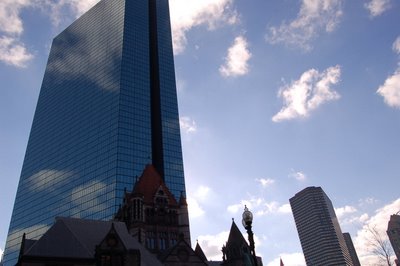
By Rachel R.
On my JUA trip I was looking for answers from different people. I wanted to find out if any one, especially artists, looked at their art (or any art) through a political/social/economic eye. From talking to artists in museums to commoners on the street, my answers became very different. Most art, some say, had nothing to do with political meaning but can express the artist in different ways. Some said any piece of artwork has to represent the artist somehow...whether it's the type of media or the style they chose to use. Some of the earliest political artwork came from Picasso, especially shown in a piece called Guernica, which represented a painted abstracts of war and soldiers. Was he trying to put out a message to the people and raise awareness? Or was he simply interested in painting such scenes? Everyone I talked with had different answers and perspectives. On my JUA trip I found a lot of answers... and also raised several more questions.
Do Modern day Artists use political/socio/economic/religious views in their art?
This question was not answered easily by Bostonian’s who were not familiar with many modern day artists or media. Within this answer I received answers such as it is not a major interest in Modern day artists, or it doesn’t sell in museums/art shows so artists try and stay away from this concept. Also if the art contained a narrative content it was said to not be as good art. For example if the primary characteristic of the majority of an artists paintings is politics, they seem to not be as well known/ liked artists. If a piece of artwork contains colors, movements, or shapes, people are more drawn to this and feel more like they can tell there own story within the piece. On the other hand, I got different artists opinions that said that all artwork contains politics because everything around every artist influences your art.
Another question I thought was essential was if art needed to represent anything. Love and Passion are key in artwork and are intertwined with art. Art doesn’t need to be political to represent something. Other people said that if an artist is to create a piece it has to represent them because it came from their mind. It was also said that it can convey certain opinions and concepts. This brought up the question if there had to be a theme in any piece and with this for the majority people agreed that they’re had to be. From an open canvas abstract to a piece with intellectual capacity people said there will always be certain themes even if it didn’t relate to everyone the same.
From the information learned I formed one last question to help me really find out what art was or wasn’t affecting. This was the fact that if people were to put out stronger views of politics or problems of the world, would it help the world to become more globally aware of our surroundings and what is happening in the world? Some answers were pushed towards saying no and that the issues were to controversial to put them into art. Others used graffiti as an example saying that this was a big form of expression especially for teens trying to speak their minds in some way using art. For example in the movie Blood Diamonds it’s not affecting people the way it should. The movie is supposed to put out a moral lesson but people just want to be entertained and they just want to see what looks good and nothing deeper behind this. Strong opinions wouldn’t change or help global problems because people are only interested in being entertained. Others said only to a certain community would it help global problems because art doesn’t relate to everyone the same and people do not have the same intellectual capacity so it could easily blow right over their heads.
Stella Johnson is a documentary photographer and artist. I liked her stories she shared with us and I enjoyed how strongly she cared about her work and how she was trying to make a difference. In this day and age its hard to put all your effort into the justice of photography. She talked about how if you work for New York times they own the copyright of all the pictures. So if they’re are very disturbing pictures taken in various countries, New York Times will not publish any of these because they don’t want negative reviews and for everyone to see the grievance. Also the press doesn't want true violence or photo journalist's real story's because they will get bad reviews. People risk there life in these countries and can't even publish the truth. Stella Johnson was the most persuasive and argumentative speakers and It really helped me learn about these worldly problems.
On this trip I was supposed to find my answers to expression of art and how and why people use this and to what extent it is used to. I will never find “the answer” to how politics is used in artwork these days. Although the answer will never be clear, my perspective has changed from going on this Junior Urban Adventure trip.
1 comment:
Rachel,
You ask so many different questions about art, expression, and the purpose of art. While you did not find the answers you were looking for, I feel that your exploration was a really valuable one, especially because you are an artist. The questions that you have explored in the last month will be pertinent the rest of your life. Please give me an update in 15 years!
Thanks for a great time in Boston.
Amy Wilson
Post a Comment